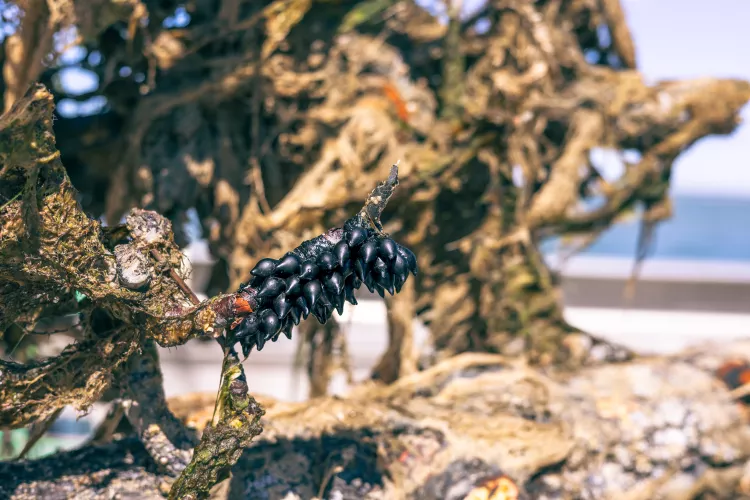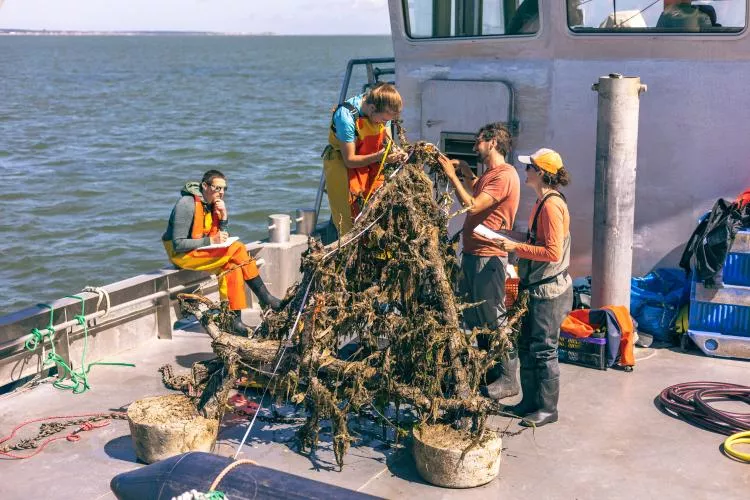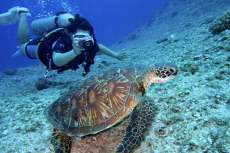Reefs made from sunken pear trees
In the Dutch Wadden Sea, a ground-breaking study shows how sunken trees may become a cost-effective and efficient tool for reef restoration, offering a glimmer of hope for our threatened oceans.
Reefs are vital centres of marine biodiversity. Yet, human activities like overfishing, deep-sea mining, dredging and trawling have led to their significant decline worldwide. Hence, there is an urgent need to implement efficient restoration initiatives to restore biodiversity.
A recent study published in Frontiers in Marine Science reveals an unexpected ally in this mission: fruit trees.
The study, conducted in the Dutch Wadden Sea, involved sinking felled pear trees into the sea to reconstruct reefs and enhance local marine biodiversity.
Mimicking nature’s process
Lead author Jon Dickson, a PhD candidate at the Royal Netherlands Institute for Sea Research, explained: "Before humans domesticated the landscape with agriculture, logging, and river controls, trees fell into rivers in large numbers and were washed out to sea. We know that such sunken wood has been present in marine ecosystems since the Jurassic, providing a home, shelter, and food for marine animals."
The study, which took place in April 2022, produced promising results.
In it, researchers crafted 32 pyramid-like structures from 192 felled pear trees. These "tree-reefs" were fixed with concrete bases and anchored to the soft sea bottom at four locations, at depths ranging from three to four meters.
Some of them were brought up at regular intervals so the researchers could monitor the amount of life that grew on them.

Unprecedented revival
One of the most astonishing revelations of this experiment was the rapid colonization of tree-reefs. After six months, the tree-reefs witnessed a profusion of sessile animals and algae, including barnacles, hydroid polyps, bryozoa, sea grapes, sea lettuce and sea stars.
"When we brought up the first reefs after four months, one of the things we saw was a lot of tunicates growing on the wood. Now, after 16 months, many of the small and medium-sized individuals have been eaten by 'something.' The remaining ones have grown very large. Whatever that 'something' is, we cannot yet say, but we believe it to be larger predatory fish.”
From barren to abundant
The structures also became a haven for a rich variety of marine life, including fish and crustaceans. They even sheltered more fish than the surrounding control areas.
According to Dickson, “The reefs are hosting five times the number of fish compared to nearby sand flats, and three times as many species!”
In total, six fish species (including whiting-pout, common goby and European eel) and four crustacean species were observed. In comparison, control sites located 200 meters away showed less biodiversity.
Interestingly, each organism exhibited a preference for specific heights, thereby creating a fascinating vertical diversity.
Glimpse of hope for reef restoration
This study provides an innovative approach to reef restoration, offering the promise of reinvigorating threatened underwater ecosystems. Further investigations will be needed to determine the effectiveness of tree-reefs in other regions and to understand the long-term ecological impact as the trees biodegrade.
Nonetheless, this method holds the potential to breathe new life into our ailing oceans, revitalizing their essential biodiversity and fostering hope for the future.




























